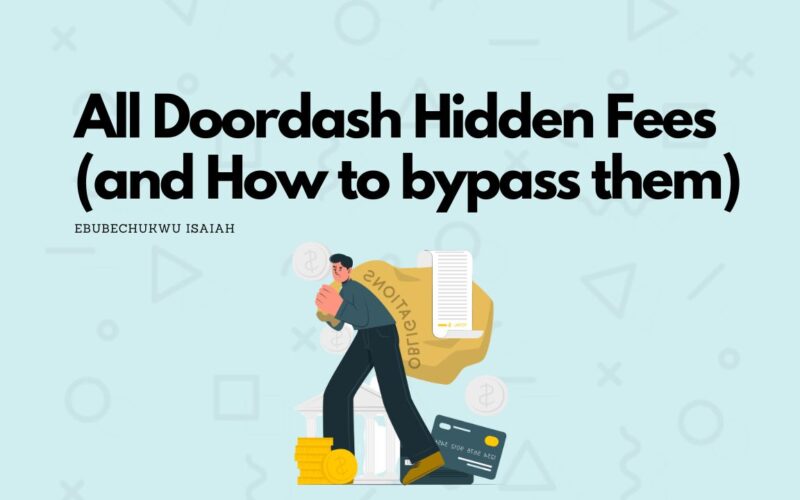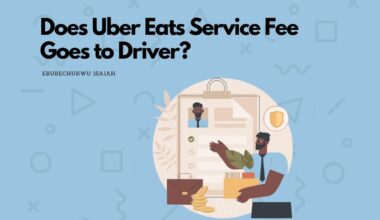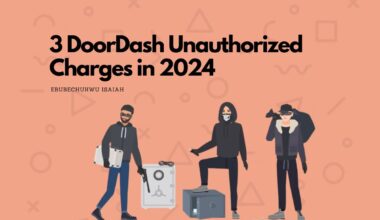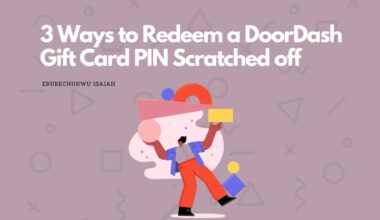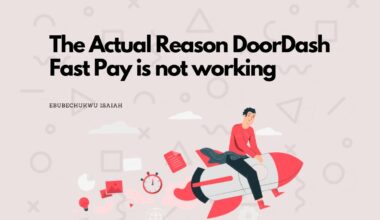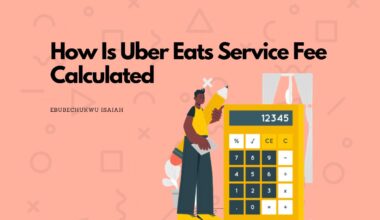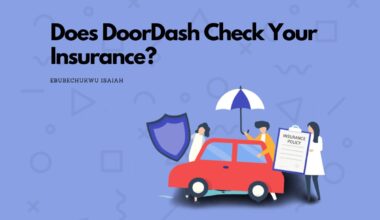When you make an order on DoorDash, you might want to assume that the price you see on the menu or the app is all you have to pay.
But the truth is, DoorDash has a number of hidden fees and charges that can add up really quickly
While these are not truly hidden, it’s something to take note of, so at least you can manage your expectations properly.
If you’re interested in getting a list of hidden fees on Doordash, this article shows you just that.
Complete List of Doordash Hidden fees
Without further ado, these
Small Order fee
Editors note: The Small order fee is a charge that Doordash levies on orders that fall below a certain dollar amount. According to the company, this makes delivery on small orders worth it.
Although this is a bit common with most restaurant and delivery companies, it’s worth mentioning that this isn’t missing on the fees Doordash could incur on a delivery.
For Doordash, however, it doesn’t state the limit of the value of the order before getting this charge…that’s where it’s a bit sketchy.
This is only what they had to say…

However, in general, you’re likely to get this charge if the value of your order is below $10.
Lastly, the charge for the small order fee is $2.5
Busy Pricing Model
Now, don’t get me wrong. There’s no actual thing as a busy pricing fee, but it’s, however, kinda real.
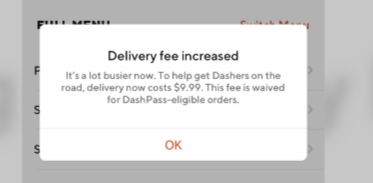
Severally, we’ve seen Doordash add, double or even triple delivery fees with the caption that “they’re busy for the day” or due to a weather condition.
In fact, here’s a Redditor comment about this…

The bad part about this is that drivers don’t get any increase in their delivery fee for this – I’m a driver myself. It’s all a gain to Doordash.
What can you do about this?
As we’ve always advised, signing up for Dashpass is the best way to bypass the delivery charge. But then, it’s important to compare and contrast your situation and how often you use Doordash.
For instance, if you rely on Doordash for your daily meal, and you order several times in a month, signing up for the Dashpass is a good deal.
However, if you’re someone that barely uses the platform and you know how to cook ッ, it might not just be worth it.
It’s noteworthy that when you no longer need the subscription you should cancel it properly, as otherwise, you’d continue getting charged by Doordash.
Regulatory Response Fee
After the boom in the delivery industry during the pandemic in 2019, following after, the government struck a policy to restrict the percentage Doordash and other delivery companies could charge restaurants they partner with.
To cover this loss that was to be made due to the law, delivery companies had to look for several tactics to implement.
For Doordash, they had to impose a fee known as the “Regulatory Response Fee.”
The regulatory response fee is a mandatory fee of around $2 per order, imposed on customers who stay in a location where this government regulation were made.
Editors note: The regulatory response fee varies by market and is typically a small percentage of the order total, typically ranging from 1-3%. It’s also only charged to customers in specific states with this regulation.
What can you do about this?
Unfortunately, the regulatory response fee applies to everyone, as long as they stay in a state that imposes the law. You can’t avoid it unless you want to avoid Doordash.
Menu markups
We said it before in our article on how to avoid doordash fees and we’re saying it now…
The price menu you find on Doordash is usually different (higher in cost) than what’s shown in the restaurant, at their traditional location.
Reason for this?
It’s simple: Doordash charges restaurants for every single order made through their platforms, alongside other charges and fees.
One way these restaurants cover these fees is to impose extras on their menu on Doordash.
For instance, if a cup of Mcdonald’s ice cream cost $10 from the shop, it could cost $5 more on Doordsah.
Now this is common among food delivery companies. Not just exclusive to Doordash.
Service Fee
Doordash would normally include a service fee for every order made on the platform. This is regardless of the value of your order and applies to everyone.
According to them, this is the fee charged intended to cover the cost used in running their business. Hence, it’s more like their profit (but it’s not!).
Sales Tax
Next, we have Sales tax.
As the name implies, you’ll get an estimated amount of tax that should be paid depending on the government regulations in your location. This is known as the sales tax.
Don’t worry though; it’s usually not expensive.
But unfortunately, you can’t bypass it.
Delivery Fees and Others
When you make an order there are basically 4 fees you should expect.
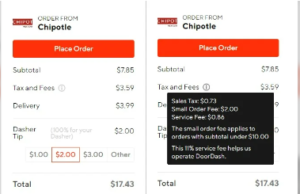
- Subtotal – the actual cost of the food you ordered
- Tax and Fees – This is the fee or section that covers most of the hidden fees we’ve been talking about all along. If you tap on it like in the image above, you’ll notice a list of other fees. This includes Sales tax, Small order fee, Service fee, etc.
- Delivery – This is basically the cost of getting your order delivered. So you’ll need to have it in mind that you have to pay a separate fee for delivery, even though you already paid a service fee. It’s worth mentioning that this fee is calculated based on the distance between your location, the driver’s location and those of the restaurant.
- Dasher Tips – Drivers like us usually get gifted after making deliveries. And the only way we get these gifts to use is when a customer tip our delivery. Now, the whole thing is fully optional. But you can just keep it in mind, ya know?
Conclusion
Hidden fees are already a big thing in the transportation industry. While Doordash’s own isn’t actually a “Hidden fee” you might just want to keep them in mind next time ordering, so you make a proper plan and estimate y our cost properly.
As an Amazon Associate, I earn a small commission from qualifying purchases. Learn more about this.
